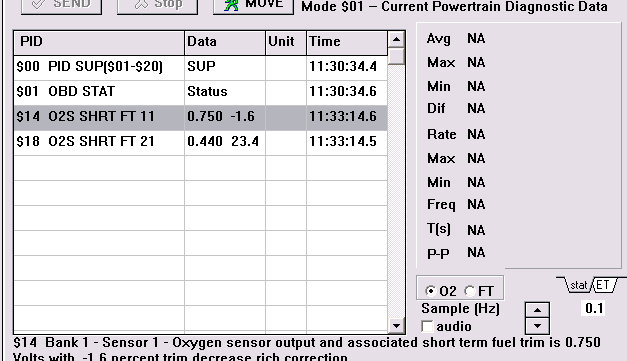|










|
|
|
OBD - Refresh Rate
Train Window Syndrome
Recently, an owner contacted me with a
scan. His OBD system had showed a TPS (Throttle Position Sensor) error while he
was actually scanning it. He ran through the data again and again, and could not
find anything wrong with the TPS data, even though the DTC was time-stamped
during the scan. Mystified, he contacted me and asked why his system had failed.
Of course, the OBD had not failed and there was nothing wrong. The DTC had been
stored correctly, it was just that the refresh rate of the Vehicle Explorer had
been too slow to capture the event. Picture yourself as the passenger in a High
Speed Train: no matter how vigilant you are, you are only going to see a tiny
fraction of the landscape detail as it flies past your window.
Vehicle Explorer is your window to the OBD events as they flash past: 0.1 Hz
(ten times per second) is actually a very respectable refresh rate - some other
OBD tools I have tried are much slower. But even this refresh rate means that 1
source can be sampled only slightly under 10 times per second, 2 sources five
times, and so on. If you sample meaningful data, like RPM, MPH, TPS, HO2S11,
HO2S12, HO2S21 and HO2S22 - and the fuel trims LTFT1 and LTFT2, each of these
items will be sampled and recorded only perhaps once per second.
|

|
| Refresh rate from a VE
scan. The rate is shown on the bottom right of the screen, Sample Hz 0.1
Note that the data reflects this - the scan effect is confusing but the data
recording is 0.1 seconds apart. |
Good enough for idle, though, isn't it? Well, not really. When
you consider that the EECV is capable of at least 1.5 million
instructions a second (and some sources put it at 2.5 million) then you realise
how much data is being missed. Even at idle of 800rpm,, the six cylinder engine
experiences 40 cylinder events (power strokes) per second, (and 26 for
the DOHC engine) so it is no
wonder that the OBD can detect and record a DTC for a single sensor in between a
scan. A second is a very long time in OBD !
Some sensors are much more likely to be captured misbehaving. An
example is the HO2S (lamda) sensor, where a failure to 'switch' is quite likely
to show up on a scan, because the time span for this will be several seconds.
|

|
| Slow-responding HO2S sensors are easily
captured - the bottom trace is the Bank 2 sensor registering a DTC for
slow-response (for over 2 seconds) and high voltage. The red trace above is
a reasonable healthy sensor. |
So when scanning do not expect to see the actual event recorded
in the DATA. If you do it is a bonus and this should not to be expected. Instead research the DTC you find, then
select the particular sensor on its own. Watch its behaviour to see if you can
confirm the error.
EricR |
| |
|
|

![]()
